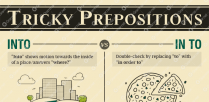While an adjective can only modify nouns, pronouns and noun phrases, an adverb modifies verbs, adjectives and other adverbs. According to a study presented at the Annual Meeting for ESL Teachers in 1984, the group identified three distinct error categories that included misplaced words, inappropriate usage and confusion with adjectives and other parts of speech. Unexpectedly, the authors found that errors increased with proficiency in a second language. The study concluded that the adverbs examples included in textbooks were actually causing students to make more errors. Here are 10 simple ways to determine when and if an adverb is required:
1. All action verbs can be paired with an adverb. If you do something, you do it well not good. For example: Turtles walk slowly.
2. An adverb can’t modify a noun. The trick here is that not all –ly words are adverbs, some are adjectives too. For example, it’s correct to say the bright table (adjective) or the brightly colored table (compound adjective) but not the brightly table. On the other hand, it is correct to say “the friendly puppy.”
3. Use this simple trick to decide when to use an adverb or an adjective: If the construction works with the verb “to be”, it is correct. For example, the puppy is friendly works because friendly is an adjective.
4. Verbs that describe senses, including feel, seem and appear, require adjectives. For example, don’t feel bad or that sounds good. By using the “to be” test, it’s easy to see that Tim feels bad. (Tim is bad) is correct, but Tim feels badly (Tim is badly) isn’t.
5. Adjectives or predicate adjectives are required by linking verbs that do not describe actions. These adjectives modify and refer back to a noun or pronoun at the beginning of a sentence. Examples include: I feel sick and Julie was anxious.
6. Many constructions can use an adverb to modify or further describe an adjective. Instead of “Pamela was happy,” an adverb can add more detail and say “Pamela was so happy that she laughed out loud.”
7. An adverb can also express quantity or add detail. While –ly words like extremely, particularly and especially are easy to identify, very, much, most, each and every are used the same way. An intensifier can modify an adjective or another adverb. For example, Alan did very well at the swim meet.
8. Always, often, usually, sometimes and never are a few of the words that describe frequency. Words that describe indefinite frequency are placed in front of verbs while words that describe a definite frequency like weekly, daily and yearly go at the end of the sentence. An indefinite adverb can also be placed at the beginning of a sentence for effect.
9. When constructing a question, the adverb is placed after the verb. For example, “is Henry usually this late?”
10. Occasionally, words like extremely, definitely, actually and really are used inappropriately. If a fiction writer were to say “an extremely eerie feeling crept over the room,” it doesn’t have the same impact as “an eerie feeling crept over the room.”
Adverbs and adjectives are easily confused by native speakers and ESL students alike, and they have a profound effect on the meaning and style of any text. One study from Columbia University, entitled “Harry Potter and the Adverb of Doom,” which analyzed the adverb use of the popular author JK Rowling, found they played an instrumental part in the development of her writing as her style and audience matured. You’re welcome to share your experiences with your personal “adverb of doom” in the comments below. Also you may want to read another useful article about how to make learning English a part of your life.








